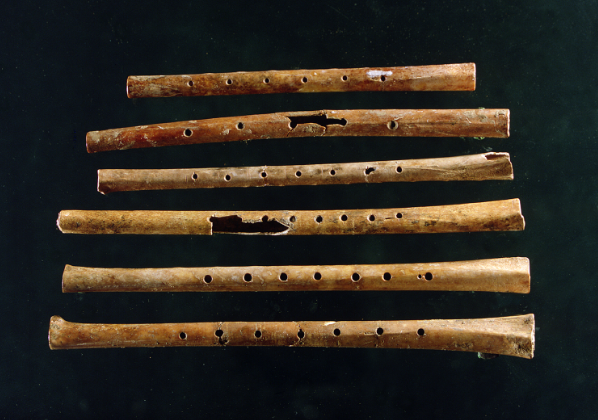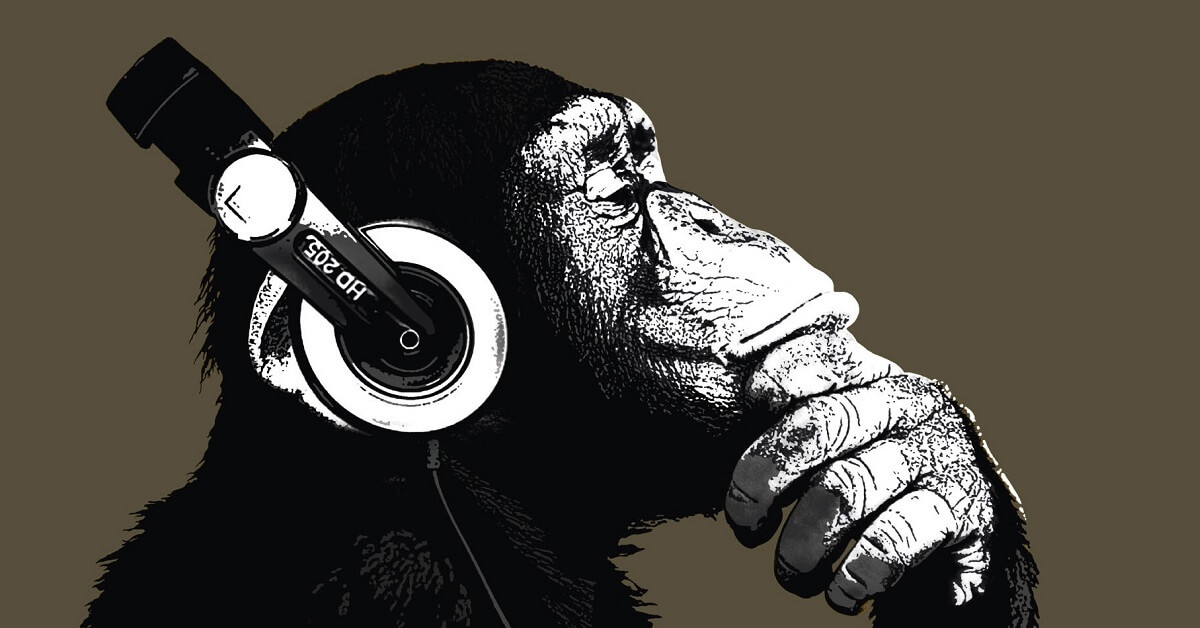How did music happen? Part 1: “Digging”
Hey. A question I’ve asked myself for longer than I can remember popped into my head for the millionth time: how did music happen? It’s been bugging me since forever and I’m sure you know exactly what I’m talking about. Anyway, I boldly decided to dive into the depths of human history and scientific thought only to find that my question was as fundamental as a question could get. My search led me through a very, very long series of smaller questions, none of which seemed to be satisfied by a simple answer. I’ll try and walk you through my process of discovery and lead you to some existential conclusions which arose from the whole experience. First of all, literally every question results in at least two more questions so it might be wise to confine ourselves within a space defined by the scientific method and logical thought, where we’ll be safe from the never-ending contemplations of philosophy and the dangerous freedom of the metaphysical. This is, after all, a blog and not a book so let’s try and set our boundaries.
Well, what is music?
We call sounds birds make “songs”. Does this mean birds create music? If birds are direct descendants of dinosaurs, did dinosaurs create music? If so, did they know it was music? If they didn’t, was it really music? See where this is going? The “If a tree falls in a forest” thought experiment. And we simply can’t go on that path if we’re to make this article shorter than Leo Tolstoy’s “War and Peace”. What we’ll do is exclude, for now at least, any sound or noise which is arguably music and is produced by any animal species other than humans. In the end, as it happens with most things in human culture, music is what most people generally agree music is.
First of all, only organized sound can be music. Then, certain elements need to be present and we need them to work together. I’m mostly talking about things like pitch, tempo and timbre. For a sound to be a piece of music you need these elements to be combined in a certain manner, so that a pattern appears. A set of rules needs to be organically created to define what’s going on in such a way so that the human brain can identify them and decode the information contained within.
What’s so special about music anyway?
We often say a song “touched” or “moved” us. While we use these expressions quite often, we seldom realize just how right we are. If you look at the way sound works, you’ll see vibrating objects creating wave patterns, which push the air in our ear canals resulting in our eardrums repeating them to produce an electrical response from our brains which we then interpret and understand. So sound, and music in particular actually touches us and moves us. The effects music can have on the human mind and body are so profound, at times they seem miraculous. Music has the magical power of warping time and space.
Music can warp time – a strong statement but just as true and simple as Einstein’s examples of relativity. How many times have you been “lost” in a musical piece only to “wake up” a few minutes later, realizing you’ve been trapped in the tune for a small eternity? A song can also be “too long” or “too short” and when we think this, it’s rarely in the context of our immediate surroundings – music exists in its own time continuum and is defined by itself.
Music can warp space. It’s astonishing just how much people use music in transition. A huge part of the music listening we do happens while we’re traveling. This is especially true for larger cities with big populations. Putting our earplugs or headphones on while we’re on a crowded bus or walking down a busy street is something we’re all pretty much used to. In these cases, the music we’re listening to creates a bubble around us. It separates and protects us from our surroundings helping us ignore small violations of our personal space, otherwise inevitable in a densely populated area.
My favorite feature of music is how we understand it – we don’t. We experience it. The way we normally think about sounds is in terms of their cause. This is called causal listening and it means defining a sound by its origin. When you go outside, let’s say, in a forest, you hear rain, for example, or a horse, or birds. But when you listen to a song you don’t hear a guitar, drums, a piano and a violin playing together – you hear the song, you experience the musical piece as a whole.
A bit of history
Since our fundamental question is time-related, we should quickly go through some basic facts about the relationship between humans and music. It’s probably safe to assume that the oldest musical instrument humans ever used was their own body. That said, as we can’t really go back in time and prove it, we should turn our attention to things we can actually see, touch and examine – archeological findings. It is generally, and quite logically, believed that the first instrument humans used to create music was some very basic form of a drum due to the obvious availability of sticks, stones, bones and other objects which can be used to hit stuff with. However, the oldest one we have actually dug up from the ground is a flute.
The Divje Babe Flute is made from animal bone and according to recent radiocarbon dating it’s around 43 000 years old – a lot older than previously thought. This would mean Homo sapiens had musical instruments before the Neanderthals went extinct. Of course, this caused major commotion in the scientific community, leading some to believe Neanderthals, who were here way before we left Africa and set foot in Europe, had something to do with our musical past and even created musical instruments of their own. Others argue that the flute is not so old and point out the technical inaccuracy the carbon-14 method can possess.
In case you haven’t looked into it recently, Neanderthals are not what they used to be. Recent discoveries have shown that the knuckle-dragging half-wits we usually imagine when we talk about Neanderthals were, in fact, highly intelligent creatures with mental capabilities close to ours. From a biological perspective, we’re actually members of the same family. Neanderthals probably even had larger brains than ours which makes the mystery around their disappearance even more mysterious, leading to theories about differences in body mass, calories and the amount of food one needs to sustain a healthy life. Yet, there’s no evidence that Neanderthals had a language or a need for very complex communication.
The drawings we’ve found aren’t very sophisticated, and none of the musical instruments we’ve excavated are believed to be of Neanderthal origin. There’s still not enough evidence to support the claims that Neanderthals created music with anything other than their bodies. Their vocal anatomy, by the way, was very similar to our own. Our skulls are practically the same and the complexity of our vocal organs is almost certainly identical. Of course, there are some minor differences which would result in small variations in timbre, for example. And there are scientists who truly believe Neanderthals used their complex vocal apparatus to create music and communicate through it.
One thing is for sure, whenever and wherever the first musical instruments were created, the techniques used to create them did not just randomly appear out of thin air. Have you ever noticed the similarity in construction between a hunting bow and a harp? Or between a dart blowgun and a flute? During the period we’re talking about it was most probably still too early for humans to come up with things that wouldn’t directly serve them as tools for survival.
Read Part 2: “Spartans, Chimps & Neurons”
…meanwhile follow our blog and check out Drooble for more music!
1 Comment
Leave a Reply
Your email address will not be published. Required fields are marked *











Excellent article!! I think we have read some of the same source material.